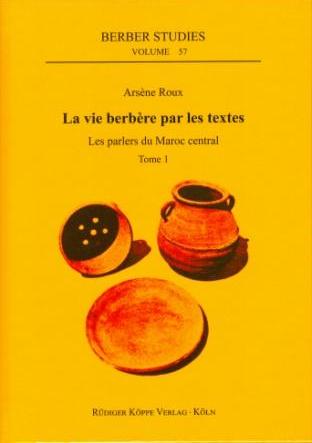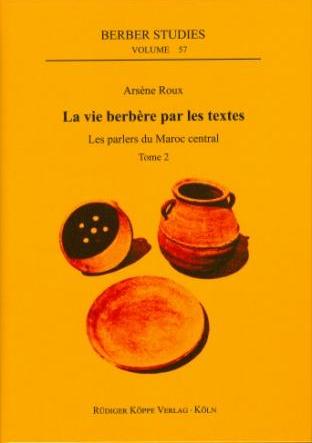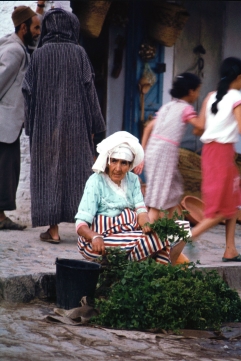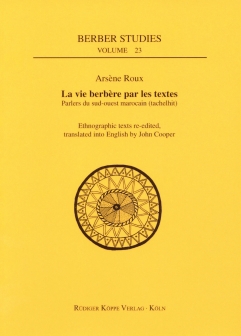



La vie berbère par les textes – Les parlers du Maroc central
Tome 1: Textes berbères établis par Harry Stroomer – Tome 2: Traductions par Claude Béringuié et Harry Stroomer / Annexes
Compiled by: Arsène Roux †. Transcribed by: Harry Stroomer. Translated by: Claude Béringuié, Harry Stroomer. Annotated by: Harry Stroomer. Edited by: Harry Stroomer. Series edited by: Harry Stroomer.
Series: BS Berber Studies Volume 57
202150 pp. Roman, 291 pp.
2 parts, together 2 colour photos, 3 facsimile reproductions (Volume 1: XLIV + 107 pp. and Volume 2: VI + 184 pp.)
Text language(s): French
Format: 170 x 240 mm
990 g
Hardcover
€ 98.00
Buy 'La vie berbère par les textes – Les parlers du Maroc central' as a downloadable PDF document directly from our online shop »
Order 'La vie berbère par les textes – Les parlers du Maroc central' as print edition »
As the title La vie Berbère par les Textes indicates, this book attempts to resurrect various aspects of the daily life of the Middle Atlas Berbers in the first quarter of the twentieth century. The areas of life described here include:
I. La vie agricole : pratiques pour obtenir la pluie, demande de beau temps lorsque la pluie persiste, autres pratiques pour demander le beau temps, les labours, association de labour, demande de terrain agricole, achat de terrain agricole, conventions d’attelage, le labour chez les Berbères, sarclage, clôture, la moisson, dépiquage et vannage, emmagasinage, le prêt de grain, le mesurage du grain et emmagasinage, la construction (du tas) de la paille, la corvée collective, le maïs, la cueillette du maïs, le jardin
II. L’élevage : l’élevage de troupeaux, le berger, le berger et ce qu’il dit à son patron, la transhumance, le chef des bergers, les poules, les abeilles
III. Les métiers : quelques métiers, le marché de El Hajeb
IV. La famille : demande en mariage, l’étranger adopté par la tribu, mariage entre veufs, divorce, l’accouchement, l’enfant chez les berbères, que dit la maman à son bébé quand il pleure, le travail et les loisirs de l’enfant né sous une mauvaise étoile, le jeune homme, le travail de l’homme adulte, l’homme riche, l’homme né sous une mauvaise étoile, la femme chez les Berbères (les occupations de la femme, le travail de la femme), la vieillesse, les vieux, la mort, rencontre avec l’au-delà
V. Les jeux : comment les Berbères passent leurs veillées d’hiver, Hi, Hurša ou herša, cache-cache, à qui appartient la main posée au dessus ?, « Le milan es passé au dessus de l’eau », « Le nomade », devinettes
VI. La vie religieuse : le ramadan, la Petite Fête et la Grande Fête, Σejjuna, Lmulud chez les berbères, Lmiluḏ, cérémonie de la nuit de Σärafa, le chant de la ṯazuḏ̣a chez les Ayt-Youssi d’Enǧil, Σašůṛa, la « nuit nouvelle », la nuit de l’entrée du printemps, le solstice d’été chez les Berbères, les marabouts, les saints, les confréries, les Aïssaouia (Σisawa), les Tireurs, les Cavaliers, Les Jnouns
VII. Organisation politique et judiciaire : le droit coutumier, le serment, l’alliance (taḏ̣å), le chef de la dissidence, administrations de la tribu, ce que disent les plaideurs devant un tribunal coutumier
VIII. La vie en société : les règles de civilité entre hommes, le savoir-vivre chez les femmes, la politesse chez les enfants.
Under these links you will find further ethnographical and ethnohistorical descriptions of Berber everyday life, Berber folktales from various regions of Morocco and a complete catalogue of Berber manuscripts of the Fonds Arsène Roux:
Accompanying material:
- Berber Prose Texts from the Ayt Hdiddu (Central Morocco)
(ISBN 978-3-89645-944-2 ) - Catalogue des archives berbères du « Fonds Arsène Roux »
(ISBN 978-3-89645-385-3 ) - Contes berbères de Figuig (Sud-est marocain)
(ISBN 978-3-89645-934-3 ) - Ethnographical Texts in Moroccan Berber (Dialect of Anti-Atlas)
(ISBN 978-3-89645-950-3 ) - La vie berbère par les textes
(ISBN 978-3-89645-923-7 ) - Poésie berbère de Figuig (ancienne et moderne)
(ISBN 978-3-89645-948-0 ) - Textes berbères des Aït Âyyache (la vallée d’Ansegmir, Midelt, Maroc) – Textes originaux avec traductions en français
(ISBN 978-3-89645-949-7 ) - Textes berbères du Maroc central (Textes originaux en transcription)
(ISBN 978-3-89645-397-6 ) - Textes berbères du Maroc central (Traductions en anglais – Translations into English)
(ISBN 978-3-89645-943-5 ) - The Travels of Sindbad the Sailor – Text in Tashelhiyt Berber (South Morocco) with a Translation in English
(ISBN 978-3-89645-959-6 )
Cross-reference:
- « Auréoles berbères »
(ISBN 978-3-89645-947-3 ) - « Parcours berbères »
(ISBN 978-3-89645-933-6 ) - L’océan des pleurs
(ISBN 978-3-89645-998-5 ) - The Berber Literary Tradition of the Sous
(ISBN 978-3-89645-999-2 )
| « back | Print version | [top] |
 Books
Books Audio
Audio Biographies
Biographies Series
Series Festschrifts
Festschrifts Journals
Journals